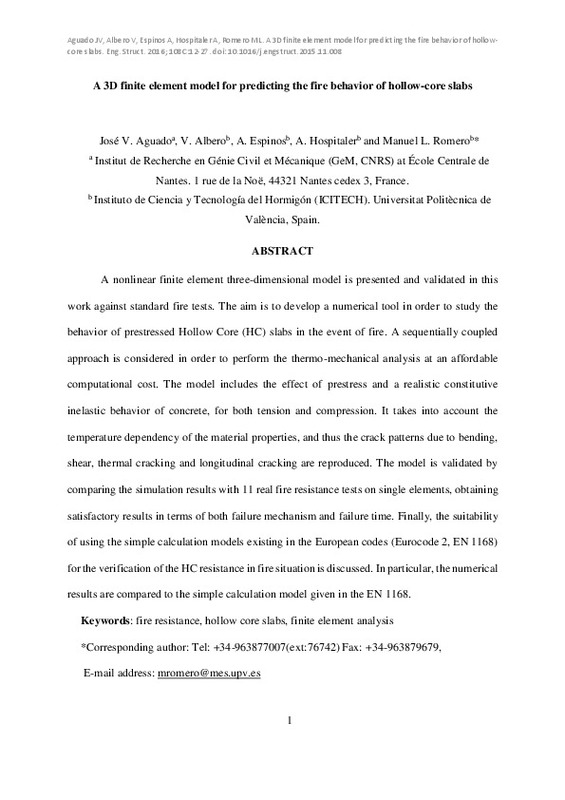|
Resumen:
|
Servicios adicionales en SFX(opens in a new window)|View at Publisher|
Export
| Download | Add to List | More...
Engineering Structures
Volume 108, February 01, 2016, Pages 12-27
A 3D finite element model for ...[+]
Servicios adicionales en SFX(opens in a new window)|View at Publisher|
Export
| Download | Add to List | More...
Engineering Structures
Volume 108, February 01, 2016, Pages 12-27
A 3D finite element model for predicting the fire behavior of hollow-core slabs (Article)
Aguado, J.V.a, Albero, V.b, Espinos, A.b, Hospitaler, A.b, Romero, M.L.b
a Institut de Recherche en Génie Civil et Mécanique (GeM, CNRS) at École Centrale de Nantes, 1 rue de la Noë, Nantes cedex 3, France
b Instituto de Ciencia y Tecnología del Hormigón (ICITECH), Universitat Politècnica de València, Spain
View references (33)
Abstract
A nonlinear finite element three-dimensional model is presented and validated in this work against standard fire tests. The aim is to develop a numerical tool in order to study the behavior of prestressed Hollow Core (HC) slabs in the event of fire. A sequentially coupled approach is considered in order to perform the thermo-mechanical analysis at an affordable computational cost. The model includes the effect of prestress and a realistic constitutive inelastic behavior of concrete, for both tension and compression. It takes into account the temperature dependency of the material properties, and thus the crack patterns due to bending, shear, thermal cracking and longitudinal cracking are reproduced. The model is validated by comparing the simulation results with 11 real fire resistance tests on single elements, obtaining satisfactory results in terms of both failure mechanism and failure time. Finally, the suitability of using the simple calculation models existing in the European codes (Eurocode 2, EN 1168) for the verification of the HC resistance in fire situation is discussed. In particular, the numerical results are compared to the simple calculation model given in the EN 1168.
[-]
|







![[Cerrado]](/themes/UPV/images/candado.png)


